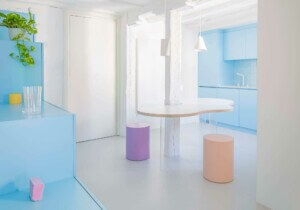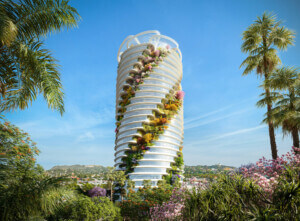From Michael Bloomberg to Olafur Eliasson, figures from the worlds of design, business, art, academia, and government all gathered in Madrid’s Teatro Real on June 1 to discuss nothing less than how to save the world, all under the auspices of the Norman Foster Foundation.
The forum was titled “Future is Now,” and the primary challenges discussed were climate change, rapid urbanization, failing infrastructure, and global inequality. In his opening remarks, Foster stated that the pressing needs of the built environment “are far too important to be left to one profession.” Over the next few hours, the diverse selection of panelists explained how each of their fields could make a contribution, whether it was flying drones that could lay bricks, or models for large-scale water-infrastructure management. (See The Architect’s Newspaper’s full coverage of the Forum here.) The day was a call to action—Alejandro Aravena said that “cities could become social ticking time bombs” and “shortcuts to inequality”—as well as an overarching manifesto and debut event for the Norman Foster Foundation, which is based in Madrid. The foundation features an archive of Foster’s sketches and models, educational programming, an in-house architectural team, and a design and technology office that will conduct research into advanced materials like carbon fiber. The Foundation is totally independent from Foster’s firm, Foster and Partners, and has a mandate to tackle the loftier challenges outlined at the forum. It will also helm its own architectural projects, such the Droneport that debuted at the 2016 Venice Biennale of Architecture and is slated for a town in Rwanda. The facility, a series of spaces encased by brick domes, aims to be a vital hub of trade and supply for remote settlements. If successful, it could serve as a prototype for similar projects across the continent.
The Foundation itself occupies a stately 1902 residence about a mile north of the Museo del Prado and Madrid’s city center. While almost all its programs are housed in the historic building, the Foundation also designed what it calls a “Pavilion of Inspirations,” a large glass-and-steel gallery that holds a collection of objects and artworks that inspire Foster—including Le Corbusier’s 1926 Avion Voisin Lumineuse car, a futurist sculpture by Umberto Boccioni, dozens of airplane and automobile models, and two designs by Buckminster Fuller, who was Foster’s mentor and collaborator.
If there were one architect who’s ideological influence loomed largest at the forum, it was Fuller, with his globe-spanning, innovation-focused view of humanity’s shared challenges. There were strong currents of techno-utopianism on some panels, and there were moments when it seemed that advanced drones and computers would supplant conventional architects in the near future. Still, with his foundation preserving and digitizing his sketches and models, Foster is betting that future generations will benefit from this study of his analog design process. When speaking to The Architect’s Newspaper, Foster said he was excited by the promises of technology, but explained, “Basically, the computer is just another tool. And don’t fool yourself because of its ultra-sophistication and its artificial intelligence that it’s actually the brain.… I would defend that to the death.”










